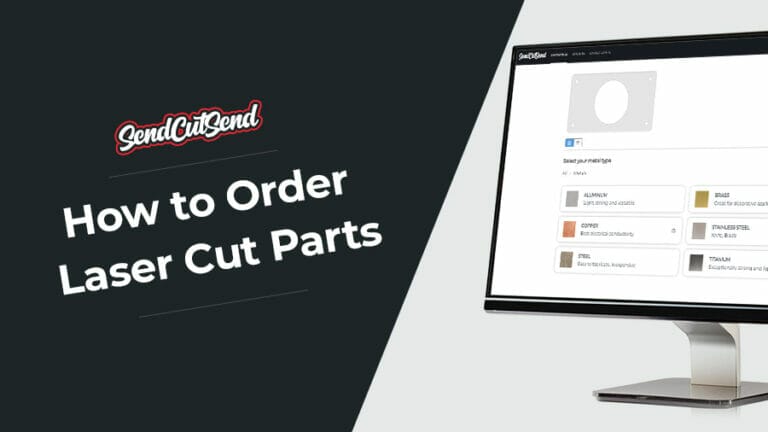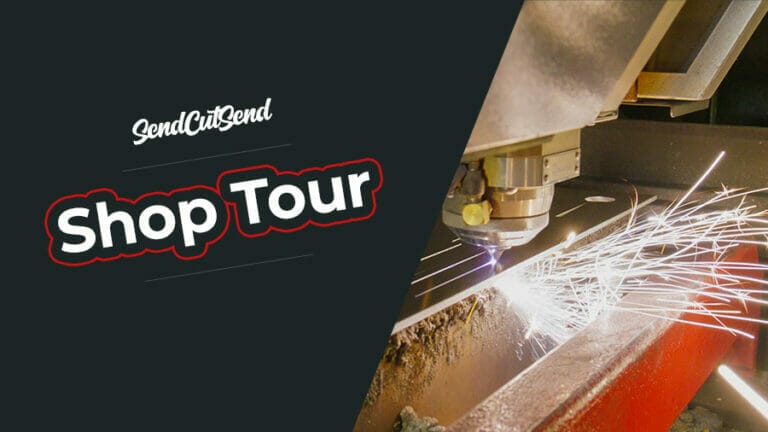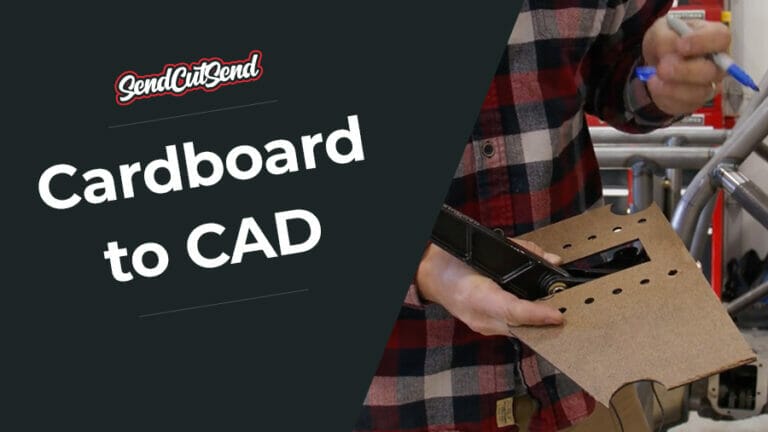Insert hardware, commonly referred to as PEM hardware, is a game-changer for engineers and fabricators. If you’ve ever struggled with nuts and bolts, welding, or tapping threads in thin materials, insert hardware is the the best way to save time assembling sheet metal parts and it’s offered by SendCutSend. This blog will cover:
- What insert hardware is and why it’s commonly called PEM hardware
- The different types of insert hardware: nuts, studs, and standoffs
- The benefits of using insert hardware over traditional fastening methods
- Key design considerations for successful installation
- Alternative fastening methods if insert hardware isn’t the right fit for your project
- Cost comparisons and when it makes the most sense to use insert hardware
This article is the written version of SendCutSend’s Cutting Corners episodes. Watch the video below subscribe on YouTube so you never miss a video.
What Is Insert Hardware?
Insert hardware, also known as PEM hardware, is a type of mechanically crimped hardware that is pressed into sheet metal. It provides strong, reliable threaded connections without the need for welding, tapping, or external nuts and bolts.
PEM is one of the most well-known brands in the industry and what we use here at SendCutSend, but there are many types of insert hardware that function similarly.
Types of Insert Hardware
The three main types of insert hardware used in manufacturing are:
1. Nuts
These are internally threaded barrels pressed into a material. They are great for applications where a traditional nut and bolt setup wouldn’t work, such as thin materials where there isn’t enough room for a nut on the backside.
2. Standoffs
Standoffs are similar to nuts but are designed to create a spacing gap between two materials. They are internally threaded and allow for precise spacing and alignment of components.
3. Studs
Studs are externally threaded fasteners pressed into a part. They are useful when you need a strong, fixed stud in place rather than a hole for a bolt or screw.
At SendCutSend, these fasteners come in a variety of thread sizes, from 6-32 up to 1/4-20, with more options being added regularly.
Why Use Insert Hardware?
Insert hardware offers several advantages over traditional fastening methods:
- Faster assembly & disassembly – No need to fumble with loose nuts and bolts.
- Stronger thread engagement – Provides a durable, long-lasting threaded connection, especially in thin materials.
- Reduces tooling requirements – Eliminates the need for tapping or welding, reducing time and labor costs.
- Prevents hardware spin-out – Unlike cheap rivet nuts, insert hardware won’t spin loose over time.
- Improves consistency in manufacturing – Ensures reliable, repeatable installation across multiple parts.
Key Design Considerations
When designing parts with insert hardware, keep the following in mind:
- Proper Installation Direction – The force of the inserted screw should pull the nut into the material, not push it out.
- Access Requirements – Pressing in hardware requires access to both the top and bottom of the part, so enclosed areas or tight spaces might pose challenges.
- Spacing & Warping – Multiple insertions close together can distort the material, especially in thin sheets. Proper spacing is crucial.
- Material Compatibility – Stainless steel hardware cannot be pressed into aluminum due to the high force required, which can deform the aluminum.
- Powder Coating & Plating Considerations – Insert hardware is installed after plating but before powder coating, with plugs used to keep powder out of the threads.
Alternatives to Insert Hardware
If insert hardware isn’t the best fit for your application, consider these alternatives for joining sheet metal parts:
- Traditional Nuts & Bolts – Simple and effective but can be cumbersome in tight spaces.
- Rivet Nuts – Useful for blind installations but can spin out over time.
- Tapping the Material – Works well for thicker materials but isn’t ideal for repeated assembly and disassembly.
- Welding – Strong but permanent, eliminating future disassembly.
- Adhesives – Can work in some applications but lacks the strength of mechanical fasteners.
Cost Considerations
Insert hardware is often cost-competitive with other fastening methods. Compared to traditional nuts and bolts, insert hardware:
- Reduces assembly time – Less labor required means lower costs over time.
- Is priced competitively – SendCutSend has no minimum for PEM hardware and you can save by ordering in bulk.
- Simplifies inventory management – No need to stock multiple fastener types and sizes separately.
- Eliminates secondary processes – No need for tapping or welding, reducing additional labor and material costs.
For small-batch manufacturing or production runs, insert hardware can streamline assembly and reduce costs significantly.
Why PEM Hardware is the Best Way to Save Time Assembling Sheet Metal Parts
Insert hardware is a powerful solution for making assemblies faster, more reliable, and easier to work with. Whether you’re designing thin sheet metal parts, creating modular assemblies, or just looking to reduce your fastening headaches, insert hardware is a fantastic option.
If you’re ready to give insert hardware a try, upload your part to SendCutSend, choose your preferred hardware, and let us handle the installation for you. With our automated hole resizing and precision installation, you’ll get a high-quality, ready-to-assemble part every time.
Check out our services page for more details, or browse our blog for more insights into sheet metal fabrication and design best practices.




